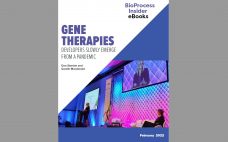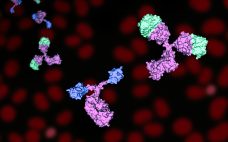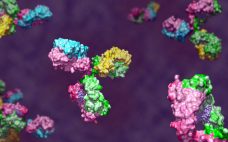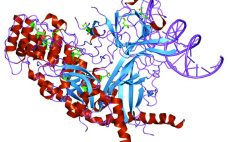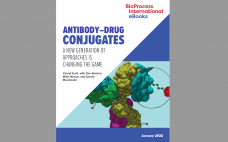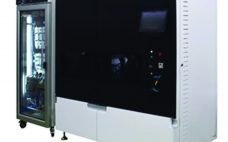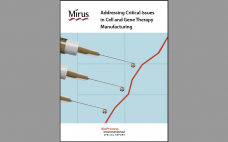This eBook gauges shifting expectations for the gene therapy industry amid the COVID-related uncertainties and clinical setbacks of the past couple years. BioProcess Insider founding editor Dan Stanton reports on the January 2022 Phacilitate Advanced Therapies Week event, specifically a standing presentation on the 10 most important industry drivers from the past year. Since 2017, advancements in gene therapies have featured prominently in these presentations. In 2021, gene therapies again made the list, but this time for more troubling reasons,…
Manufacturing
eBook: Gene Therapies —
Antibody-Derivative Biotherapeutics: Fragments and Fusions Define the Future
Monoclonal antibodies (MAbs) remain the dominant biopharmaceutical product class, but as biotechnologies have advanced in recent decades, developers have found ways to exploit their “magic-bullet” capabilities while putting aside their limitations. That has led to a new generation of antibody-related therapeutics created by cutting and pasting molecular domains. Researchers are mixing and matching functional moieties of antibodies and other molecules to create custom-designed proteins with powerful efficacy and tunable targeting. A simple search at Taylor & Francis Online (https://www.tandfonline.com), the…
Development and Manufacture of Therapeutic Bispecific Antibodies
To meet the ongoing need for new and improved drugs, the biopharmaceutical community strives to create molecules with new functions. Bispecific antibodies (bsAbs), which can simultaneously home in on two different targets, illustrate the scientific ingenuity needed for this task. The basic proof of concept for these complex molecules was established in 1960 (1), and their application to the redirection of effector cells was reported in the mid-1980s (2–4), but producing them has proved to be challenging. Many technical advances,…
Lymphocyte Activation Gene 3 in Immunooncology: A Soluble Protein Alternative
Early in 2021 at the American Society of Clinical Oncology’s (ASCO’s) annual meeting, attendees witnessed the first validation of a novel checkpoint target: lymphocyte activation gene 3 (LAG-3). Bristol Myers Squibb’s (BMS’s) recent success in a phase 3 study of the relatlimab anti-LAG-3 monoclonal antibody (MAb) proved that the combination of LAG-3 and programmed cell death protein 1 (PD-1) is more effective than the standard of care in first-line metastatic melanoma (1). For about seven years, that standard has been…
eBook: Antibody–Drug Conjugates —
A New Generation of Approaches Is Changing the Game
Combining large proteins with linkers and cytotoxins, antibody–drug conjugates (ADCs) may be the most complex drug molecules in development today. Despite early promise and product approvals, a number of technical concerns arose during product and process development. Characterizing and ensuring consistency in the number of small molecules that attach to the antibody — as well as ensuring their proper attachment and biophysics — all present significant challenges to ADC developers. Solving early problems associated with product quality has introduced a…
Tris, a Critical Raw Material: Improving the Quality and Consistency of Supply
ANGUS Life Sciences is the world’s largest supplier of tromethamine buffers and the only manufacturer of the tris molecule based in the Western hemisphere. The company sells directly to biopharmaceutical customers and contract manufacturing organizations as well as to reprocessors who repackage the chemical or process it into different grades and derivatives. After recent expansions in both the United States and Germany, the company now boasts dual-source manufacturing capabilities for its highest-purity tris products and is confident about its ability…
Realization of Quality By Design and Beyond: The Intelligent Cell Processing System
Cells are used as raw materials, intermediates, and final products in biopharmaceutical and cell therapy manufacturing. Because living cells are always in a dynamic state, their characteristics must be kept within specified ranges throughout bioprocessing to preserve their utility. Cell population expansion without changing the original cell properties is key for obtaining the required number of cells at the next step. However, limited process data are collected during the expansion phase — information that could be used to understand and…
Get High-Throughput, Definitive Identification of Viable Cells and More in Your Cell Therapy
Analyzing for viable cells using traditional methods such as flow cytometry often encounters clogging resulting in the loss of precious cell therapy samples. Not only is it low throughput, but incredibly complicated, which can lead researchers to misidentify cellular and non-cellular material and confuse cell viability results with product-purity issues. Additionally, it is a regulatory requirement for all injectable drug products be characterized for sub visible particles (SVP) and aggregates that may form during a manufacturing process. With Backgrounded Membrane…
Addressing Critical Issues in Cell and Gene Therapy Manufacturing
Recombinant lentivirus (LV) and adeno-associated virus (AAV) are critical components of cell and gene therapies, which show great promise for treatment of diseases from genetic disorders to cancer. Accordingly, there is an unprecedented need for high titer and large-scale viral vector manufacturing processes to support the growing number of researchers developing biotherapeutics for immunotherapy. Download this Special Report, highlighting: Evolutions of gene therapy manufacturing Improvements to GMP raw-material sourcing. Role of transfection reagents like VirusGEN® GMP as a turnkey element…
The Green Imperative: Part 3 — Postuse Management of Single-Use Bioprocessing Materials, Today and Tomorrow
The world desires a more sustainable economy in which resources can be saved, products can be profitably used, and at the end of their useful life, component materials can be recycled into other useful products. The bioprocessing industry has made efforts to meet those goals and has learned a great deal about the role of plastic components in sustainable manufacturing. The most important lesson might be that a science-based approach is required to provide an accurate benchmark of manufacturingĘĽs environmental…

